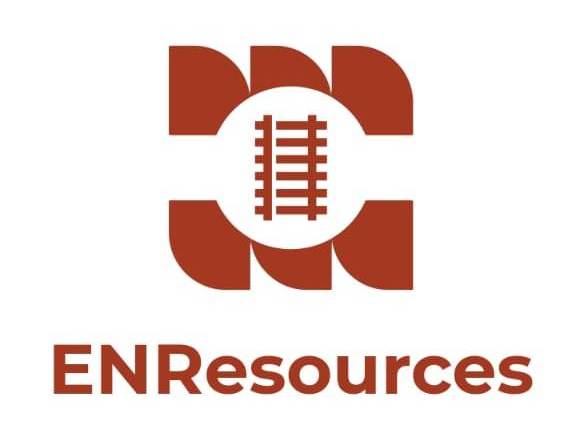Introduction
In a dissertation, the literature review chapter is a critical component that provides a comprehensive analysis of the existing literature on a particular research topic. It forms the basis for the research by outlining the current state of knowledge, identifying gaps in understanding, and highlighting areas that require further investigation. Therefore, a well-written literature review chapter is crucial for a successful dissertation.
The literature review chapter is not simply a summary of existing research; instead, it requires a critical analysis of the information presented. This involves carefully selecting and evaluating relevant sources and synthesizing them into a coherent argument. The literature review chapter should also be structured in a way that effectively communicates the findings to the reader. By doing so, the literature review chapter ensures that the research is grounded in a solid foundation of knowledge and provides a strong basis for further investigation.
This article will provide an in-depth guide to writing the literature review chapter of a dissertation. It will cover key aspects such as understanding the purpose of the literature review, crafting a structured literature review, analyzing and synthesizing literature, writing the literature review chapter, and common challenges faced during the writing process. By the end of this article, readers will have a clear understanding of how to write an effective literature review chapter that enhances the overall quality of their dissertation.
Understanding the Literature Review Chapter
The literature review chapter is a critical component of any dissertation. Unlike other sections of a dissertation, the literature review does not present new research or findings. Instead, it provides a comprehensive analysis and synthesis of existing literature on a particular subject or phenomenon.
The main goal of the literature review chapter is to identify gaps in previous research and highlight the relevance of the proposed study. By demonstrating the importance of the chosen topic, the literature review chapter establishes the rationale for the research questions and hypotheses that will be explored in subsequent chapters.
Conducting a comprehensive literature search is crucial for writing an effective literature review. This involves selecting relevant sources, critically evaluating their content and quality, and synthesizing the information to present a balanced and unbiased analysis of the literature.
Crafting a Structured Literature Review
Creating a well-structured literature review chapter is essential for a successful dissertation. It not only helps in presenting a clear and logical argument but also makes it easier for the reader to understand the flow of ideas. There are various approaches one can take to structure this chapter, including the chronological, thematic, and conceptual frameworks.
1. Chronological Framework
The chronological framework involves organizing the literature based on the time of publication. This approach is particularly useful when the research question requires an understanding of how the topic has evolved over time. It helps in identifying key trends and patterns that have emerged and allows the researcher to analyze the changes that have taken place in the field of study.
2. Thematic Framework
The thematic framework involves organizing the literature based on specific themes or topics that emerge from the research question. This approach helps in identifying the key issues and debates within the field of study and analyzing how different authors have contributed to the discourse. It also facilitates the identification of any gaps in the literature that need to be addressed.
3. Conceptual Framework
The conceptual framework involves organizing the literature based on the theoretical concepts that underpin the research question. This approach helps in identifying the key theoretical perspectives and frameworks that have been used to study the topic. It also allows the researcher to analyze how different authors have applied these frameworks and to identify any gaps or inconsistencies in their application.
Regardless of the approach taken, it is essential to maintain a clear and logical structure throughout the chapter. This involves providing smooth transitions between different sections of the literature review and ensuring that the argument flows logically from one idea to the next.
Analyzing and Synthesizing Literature
The literature review chapter is not just a summary of the sources retrieved during the research process. It is also an opportunity to evaluate and synthesize the information gathered, critically analyzing it for relevance and significance to the dissertation topic.
1. Critical Analysis
When analyzing literature, it is important to adopt a critical approach, assessing the strengths and weaknesses of each source. This involves examining the author's arguments and evidence, as well as identifying any biases or limitations.
A critical analysis should be unbiased and objective, presenting a balanced assessment of the available literature. It is important to avoid personal opinions and ensure that the analysis is based on evidence and facts.
2. Synthesizing Information
After conducting a critical analysis of the literature, it is necessary to synthesize the information gathered, identifying common themes, patterns, and trends. This involves drawing connections between different sources and evaluating the overall significance of the findings in relation to the dissertation topic.
One effective way to synthesize the literature is to create a matrix or table, categorizing the sources based on specific themes or topics. This can help to identify gaps in the available literature and highlight areas that require further investigation.
3. Highlighting Contradictions
When synthesizing the literature, it is important to identify any contradictions or inconsistencies between different sources. This can help to identify areas of controversy or debate within the field and provide an opportunity for the dissertation to contribute to the ongoing discussion.
It is also important to acknowledge any limitations or weaknesses within the literature. This can help to provide a more nuanced and balanced view of the topic, demonstrating a thorough understanding of the available research.
Writing the Literature Review Chapter
Once you have conducted a comprehensive literature search and analyzed and synthesized the findings, it's time to start writing the literature review chapter.
1. Structuring Paragraphs
When writing the literature review chapter, it's essential to structure your paragraphs in a logical and coherent manner. Begin each paragraph with a clear topic sentence that summarizes the main point of that section. Use relevant examples and evidence to support your arguments and ensure there is a smooth transition between paragraphs.
2. Using Appropriate Language and Academic Style
It's important to use appropriate language and academic style when writing the literature review chapter. Use formal language and avoid contractions or slang. Use academic vocabulary and ensure that your writing is clear and concise. It's also essential to use proper citation methods and formatting guidelines as outlined by your institution.
3. Integrating Findings Into the Overall Argument
The literature review chapter should be integrated into the overall argument of your dissertation. Ensure that the evidence and analysis presented in this chapter aligns with your research question and hypothesis. Highlight the connections and relationships between different sources and explain how they contribute to the overall understanding of the topic.
4. Overcoming Common Challenges
Writing the literature review chapter can be challenging, especially when it comes to managing the volume of literature and presenting a balanced analysis. However, it's important to remain focused and objective throughout the writing process. To overcome these challenges, break down the writing into smaller sections, take breaks to refresh your mind and seek feedback from your supervisor or peers.
By following these tips, you can write a clear and well-structured literature review chapter that sets the groundwork for the rest of your dissertation.
Conclusion
Writing a literature review chapter for a dissertation is a critical process that requires careful planning, research, and analysis. By understanding the purpose of this chapter, structuring the review effectively, and critically analyzing and synthesizing the literature, a well-rounded and informative literature review chapter can be achieved.
It is essential to keep in mind that writing a literature review chapter is a continuous process and requires ample time and effort. By following the techniques and tips discussed in this article, students can enhance their writing skills and create a literature review chapter that adds substantial value to their overall dissertation.
FAQ
Q: Why is the literature review chapter important in a dissertation?
A: The literature review chapter is crucial in a dissertation as it provides a comprehensive overview of existing research and knowledge on the topic. It helps establish the context for the study, identifies gaps in the literature, and justifies the need for the research.
Q: How does the literature review chapter differ from other sections of a dissertation?
A: Unlike other sections of a dissertation that focus on presenting original research findings, the literature review chapter synthesizes and analyzes existing literature. It aims to establish the current state of knowledge on the topic and build a strong theoretical foundation for the study.
Q: What are the main goals of a literature review chapter?
A: The main goals of a literature review chapter are to critically evaluate relevant sources, identify key themes and trends, and provide a comprehensive understanding of the topic. It also aims to demonstrate the researcher's knowledge and understanding of the existing literature.
Q: What organizational techniques can be used to structure a literature review chapter?
A: There are several organizational techniques that can be used in a literature review chapter, including chronological, thematic, and conceptual frameworks. These frameworks help organize the literature based on the order of publication, common themes, or theoretical concepts.
Q: How can I analyze and synthesize literature effectively in my literature review?
A: To analyze and synthesize literature effectively, it is important to critically evaluate the selected sources, identify key arguments and findings, and discuss their strengths and weaknesses. Synthesis involves integrating information from multiple sources to develop a coherent and balanced understanding of the topic.
Q: What practical tips can help in writing the literature review chapter?
A: When writing the literature review chapter, it is important to structure paragraphs coherently, use appropriate academic language and style, and clearly connect the findings to the overall argument of the dissertation. It is also helpful to address common challenges such as writer's block or the overwhelming amount of literature by utilizing strategies like setting realistic goals and seeking feedback from peers or mentors.
About the Author

Emmanuel is an MSc graduate of Engineering Project Management at Coventry University, UK. He has over 20 years of experience as a dissertation writing research tutor, project manager, and business development professional. He has a strong background in delivering high-quality research-based content across various industries. His writing style is versatile, allowing him to adapt to different subjects and formats, including academic papers, market research reports, and business proposals. You can enroll for his Research Writing Assistance and Tutoring Services to enhance both your academic performance and career readiness.
References
- Kvale, S., & Brinkmann, S. (2015). InterViews: Learning the craft of qualitative research interviewing (3rd ed.). Sage Publications.
- Lovitts, B. E. (2002). Leaving the Ivory Tower: The Causes and Consequences of Departure from Doctoral Study. Rowman & Littlefield.
- Mark Stephan Felix and Smith, I. (2019). A practical guide to dissertation and thesis writing. Newcastle Upon Tyne, England: Cambridge Scholars Publishing.
- Murray, R. (2016). How to write a thesis (3rd ed.). McGraw-Hill Education.
- Naoum, S.G. (2019). Dissertation Research and Writing for Built Environment Students. Routledge.
- Paltridge, B., & Starfield, S. (2013). Thesis and dissertation writing in a second language: A handbook for supervisors. Routledge.
- Phillips, E. M., & Pugh, D. S. (2016). How to get a PhD: A handbook for students and their supervisors (6th ed.). Open University Press.
- Swales, J. M., & Feak, C. B. (2011). Academic Writing for Graduate Students: Essential Tasks and Skills. University of Michigan Press.




